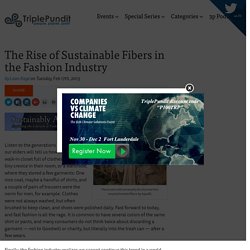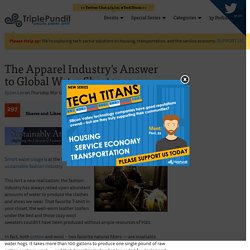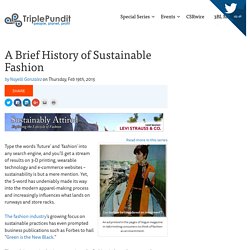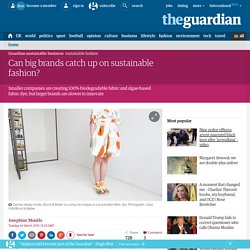

The true cost of 'fast fashion': why #whomademyclothes is trending this week. Fashion and politics do not make the happiest of bedfellows.

For all its virtue signalling, a system based on inequality and insecurity – that’s the fashion business – has little room for genuine compassion. However, this week the beneficiaries of sweated labour are being asked to examine their consciences – and their order books – as part of Fashion Revolution Week. This is a global response to the collapse of the Rana Plaza factory complex in Bangladesh that killed 1,134 people and injured 2,500 more, on 24 April 2013. And as well as a “label selfie” campaign on social media, it has already provoked a special Fashion Question Time in the House of Commons, hosted by Labour MP Mary Creagh, at which the industry was urged to come clean about its foreign suppliers and help to clean up the iniquitous conditions under which their workers are hired.
Greek designer Athena Korda speaks out with her collection in 2015. The Rise of Sustainable Fibers in the Fashion Industry. Listen to the generations before us, and our elders will tell us how instead of a walk-in closet full of clothes, they had a tiny crevice in their room, or a wardrobe, where they stored a few garments: One nice coat, maybe a handful of shirts, and a couple of pairs of trousers were the norm for men, for example.

Clothes were not always washed, but often brushed to keep clean, and shoes were polished daily. Fast forward to today, and fast fashion is all the rage. It is common to have several colors of the same shirt or pants, and many consumers do not think twice about discarding a garment — not to Goodwill or charity, but literally into the trash can — after a few wears. Finally, the fashion industry realizes we cannot continue this trend in a world where the rising population will have to devote more land to food — or even energy.
We cannot continue to grow cotton like mad, nor can we endlessly spin fossil fuels into polyester or other synthetic fabrics. Cotton Hemp Bamboo Synthetics. The Apparel Industry's Answer to Global Water Shortages. Smart water usage is at the heart of a sustainable fashion industry.

This isn’t a new realization; the fashion industry has always relied upon abundant amounts of water to produce the clothes and shoes we wear. That favorite T-shirt in your closet, the well-worn leather loafers under the bed and those cozy wool sweaters couldn’t have been produced without ample resources of H20. In fact, both cotton and wool – two favorite natural fibers — are insatiable water hogs. It takes more than 100 gallons to produce one single pound of raw cotton or shorn wool — and that doesn’t include what is needed for rinsing and preparing the product, or washing and dying the fabric once the material is made.
But the real challenge today is ensuring there are enough water resources in the regions where the products are made. Minimizing water pollution Other organization members include Levis Strauss & Co., H&M, Marks & Spencer, Puma, United Colors of Benetton and Adidas, to name a few. More Intelligent Life. It’s a buzzword of the moment, but is it also a contradiction in terms?

Our undercover reporter goes in search of true sustainability From INTELLIGENT LIFE Magazine, Winter 2010 Buying truly sustainable fashion is a huge challenge. Sustainability means using resources in a way that does not impoverish the planet for the next generation. Fashion, on the other hand, is wedded to novelty and consumption, neither of which mesh naturally with the concept of sustainability. So which materials should the sustainably minded seek out? There are increasing worries, too, that most of clothing’s environmental impact comes from the energy and water involved in washing and drying. Upcycling—where waste products are converted into products of higher value—is also taking off. How can the fashion industry become more sustainable?
A Brief History of Sustainable Fashion. Type the words ‘future’ and ‘fashion’ into any search engine, and you’ll get a stream of results on 3-D printing, wearable technology and e-commerce websites – sustainability is but a mere mention.

Yet, the S-word has undeniably made its way into the modern apparel-making process and increasingly influences what lands on runways and store racks. The fashion industry’s growing focus on sustainable practices has even prompted business publications such as Forbes to hail “Green is the New Black.” Through innovative business practices, the fashion industry has come a long way in improving environmental and social conditions along complex global supply chains. Still, it has a way to go. A brief look into the industry’s storied past illuminates how corporate style setters have responded to shifting consumer demands, market trends and natural resource constraints over the years – signaling what the future of sustainable fashion might hold. From industrialization to Earth Day Back to the future. Can big brands catch up on sustainable fashion? Imagine a pair of trousers you could throw on the compost.

After years of use, they could decompose among the eggshells and tea bags to leave behind nothing but some fertile soil to help grow new raw materials. It takes the circular economy to a whole new level. This is the idea behind F-ABRIC, a range of materials developed by Swiss company Freitag. Until recently, Freitag’s only line of business was making bags out of old truck tarpaulins. While natural fibres like cotton will compost over time, synthetic fibres like polyester won’t, and natural fibres are often blended with synthetic. The fact that it is biodegradable does not make the fabric any less hard-wearing, says one of the founders, Daniel Freitag. Freitag is not the only company looking to microorganisms for inspiration.